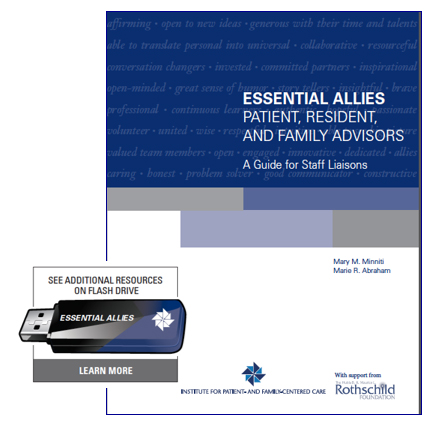Now, more than ever health care organizations are inviting patients and family members to collaborate with them as advisors in efforts to change and improve. The roles that patient and family advisors can play are nearly limitless.
If you are just getting started and don’t know where to begin, think of any process or project undergoing review or that is in the planning phase. Invite and prepare patients and families to participate on a work group. If you have an established patient and family advisory council or experience with advisors, continue to search for opportunities to expand their involvement.
Roles for patient and family advisors include the following:
- Members of patient and family advisory councils
- Members of task forces or work groups
- Members of quality improvement teams
- Members of interdisciplinary committees such as those for patient experience, patient safety, and ethics
- Reviewers and co-authors of patient and family educational and informational written and online materials
- Peer educators/coaches/mentors for other patients and families
- Faculty for preservice, new employee orientation, and inservice sessions for health care professionals, students, and trainees
- Members of teams involved in facility design, renovation, and wayfinding improvements
- Members of committees hiring new leaders and key staff
- Members of boards of trustees
- Partners in health care research and dissemination efforts
- Participants at conferences and working meetings
- Ambassadors and speakers at community events such as health fairs

Adapted from Essential Allies—Patient, Resident, and Family Advisors: A Guide for Staff Liaisons
Establishing a productive and successful patient and family advisory program requires thoughtful recruitment, selection, preparation, and ongoing support. You can explore our Resources section for materials, publications, and videos to help you in your efforts.






